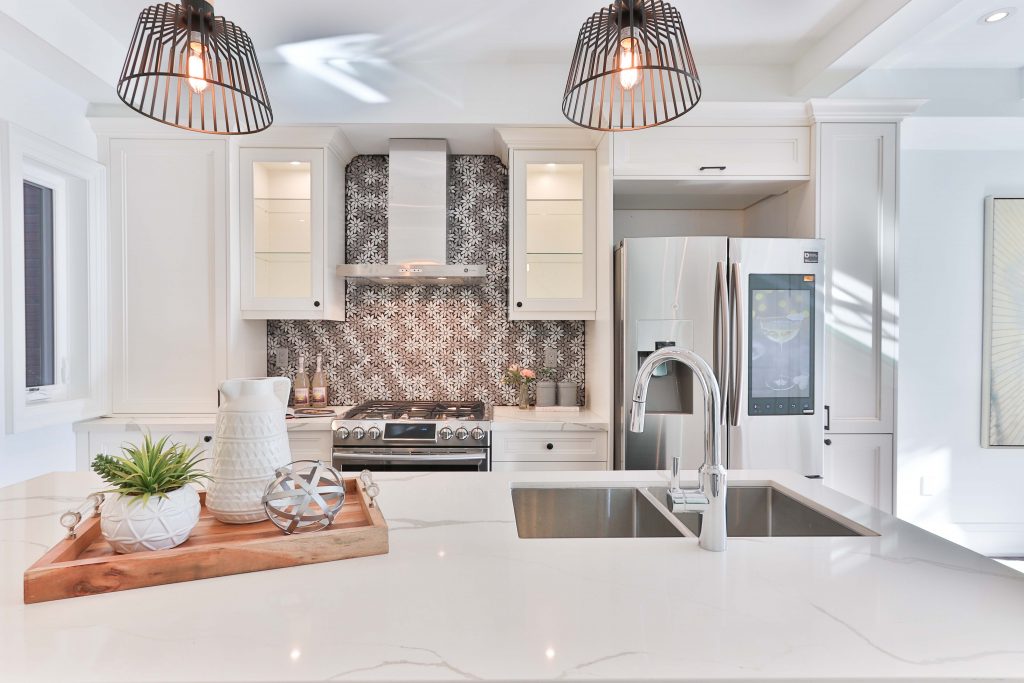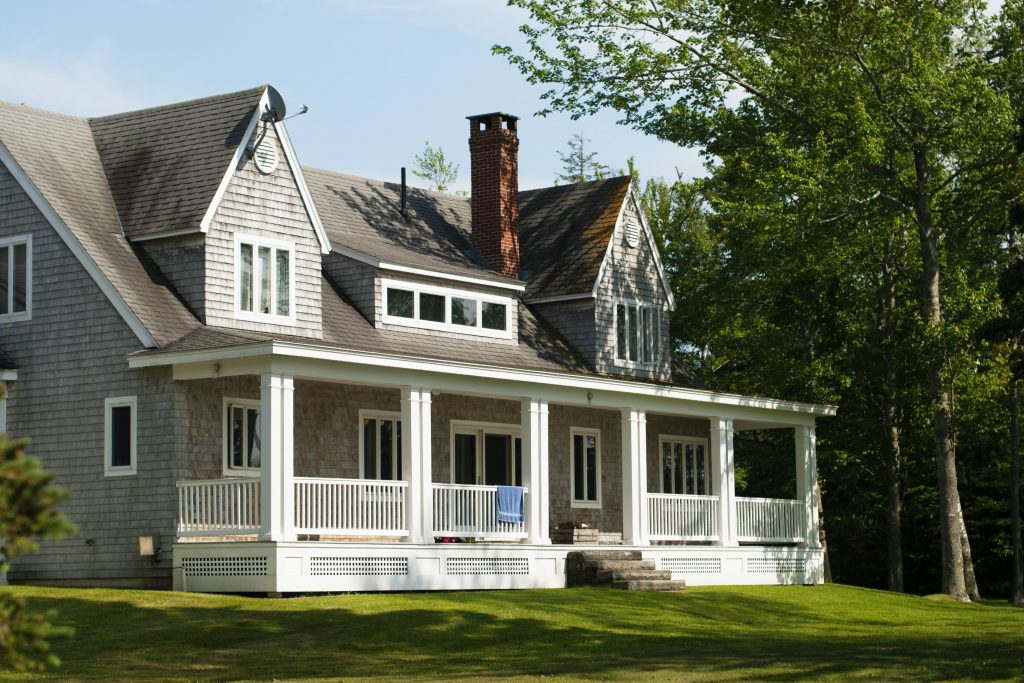
For most Canadians, a home looks like a few different things. It is either a single-family dwelling, a townhome, condominium or a high-rise. But Daniel Croft, Vice President of Giant Container Services, is looking to change that!
In the quest to find less expensive housing and alternatives to the conventional home, we have seen many new ideas crop up in the last decade. From container homes to tiny homes and even the centuries-old design of a yurt, Canadians and Canadian manufacturers are starting to look at the home in an entirely different way.
CONTAINER HOMES
Giant Container Services is a Toronto company that’s been converting shipping containers into homes for over 10 years. With roots in the trucking industry, it was in the early 2000’s when Croft’s grandfather started noticing these big containers being used for storage. This was the lightbulb that resulted in a new division being born – turning the containers into homes.
Croft started with 100 containers and has since noted business has been booming! During a conversation with Croft, he noted “huge interest in container homes” elaborating on some of the company’s projects, which included condominiums built out of hundreds of containers!
While he noted that many of his current clients are using the containers as a vacation property home, the demand continues to grow. Currently, Giant Containers offers four models ranging from a 320 square foot 1-bedroom / 1-bathroom build to a 960 square foot 2-bedroom / 2-bathroom build; all for just $85 a square foot! Despite the containers basically being a prefabricated steel structure, Croft says they’re built like a house and include electrical and plumbing; the same as you would find with a traditional build. His company also works to guide owners through the process of assembling the containers.
After getting his feet wet in the small-home industry, Croft sees the prefabrication of living structures, like these containers, as the future of home ownership! Not only are they affordable, but they can also be transported at low costs and last longer than a conventional wood frame home.
When asked about what type of people purchase these homes, Croft noted that his customers range from millennials to couples in their 40’s. According to him, his clients and target demographic “knows they want to be in a container house; they like the look and feel of it and the sustainability aspect”. He admitted that this is something he has been really behind in (us too, Daniel!) but he really feels that this is the future of building.
MICRO HOMES
As Canadians become more focused on affordability and as environmental concerns continue to grow year-over-year, it is easy to see why these small houses could be the start of a new eco-friendly future!
In fact, across the country in British Columbia, a company known as Nomad Micro Homes also experienced a boom in interest for its product. The company offers two styles of micro homes – their NOMAD Cube and NOMAD Micro. The Micro runs $25,500 USD for the studio version ($27,800 USD for the guest suite version) while the Cube will set you back $38,800 USD.
The founder and CEO of Nomad Homes, Ian Kent, describes the product as a “do it yourself” kit home; similar to something you’d buy in Ikea that can be put together very quickly. While they may be simple, he notes people can live in them as a primary residence. It is also important to note that Nomad’s designs aren’t on wheels like some versions of tiny homes.
According to Kent, the company sells roughly 30 homes a year but has the ability to increase production scale to thousands of units if needed. Kent sees the tiny home as one answer to a rental supply crisis gripping B.C.’s Lower Mainland as it is an “extremely low-impact backyard dwelling It is small and private; nobody cares about it and you’re not going to bother anybody with it. Plus, you’re going to provide the most affordable housing in the Lower Mainland!”
Indeed, this could be the option that we need for homeless individuals and others who cannot afford high housing or rental prices. In fact, in Vancouver alone, the 2019 Homeless Count found that more than 2,200 people do not have a home! In order to help resolve this, the Government of British Columbia committed its April 2019 funding towards the development of more temporary modular housing across the province. As of April 2020, there are currently 663 units of modular housing in Vancouver.
Avi Friedman, a professor of architecture at McGill University in Montreal, believes the shrinking size of the home is a reflection of the economy. The reality is, building larger homes costs more. Add this to the fact that many Canadians are no longer having children – according to Stats Canada, the total number of births dropped 3% from 2014 to 2018. For those who do, many of these families are smaller than previous generations, resulting in less space requirements.
Friedman also suggested buyers want bigger homes to start with, but when millennials are entering the current market, they are simply unable to afford the size of dwelling their parents owned. He notes that in the past, many people’s first home was a single-family house, but today most people begin their adult life in an apartment.
While the professor agrees these alternative homes can help alleviate the housing pressures in areas like Toronto and Vancouver, he wouldn’t want to see tiny homes in all communities. Instead, he sees these homes integrated among a range of housing options.
Friedman also called on municipalities to be innovative, allowing for flexible designs to address the housing issues. “What municipalities can do is revisit archaic bylaws that have been introduced in the 1940s and ’50s and see how they can be readjusted to current economic and social reality,” he says.
WHAT ABOUT A YURT?
If the container or micro home isn’t your thing, there’s a centuries-old way of living to put you more in touch with nature. The yurt design is essentially that of a circular tent. Patrick Ladisa is the President of Yurta, a yurt manufacturer in Toronto, who says he’s always been interested in minimalist architecture. Back in 2004, his company built its first yurt, which was designed to be a relief or cost-effective living shelter.
The company makes two sizes of yurts; a 13’ diameter (133’ sq) and a 17’ diameter (226’ sq). Both are available in 6’ and 7’ wall heights and range between $10,500 to $11,500 with your choice of insulation packages from $3,500 to $4,000. They also have additional options such as windows, a solid door and a chimney outlet. What you won’t likely see is much indoor plumbing. Ladisa noted the attraction to the yurt compared to the container or tiny home is a desire to be close to nature and a connection to the outdoors.
As with any good business idea, Yurta has since evolved making a splash in the recreational market. Ladisa now sees people using the structures as a guest space at a cottage, or in place of a cabin in the woods.
financing on an alternative home
When purchasing a prefabricated home, there are a few things to keep in mind with regards to financing.
- It is only possible to get a mortgage on the property if it has been de-registered and permanently affixed to land that is owned already, or being purchased by the buyer. Otherwise, it’s considered a chattel loan (similar to an auto loan).
- The age of the prefabricated home will determine the maximum amortization on the loan. You are only able to amortize a property the expected remaining economic life of the home, less five years.
- A minimum down payment of 20 percent is still required for the purchase of the prefabricated home – just like with a regular mortgage – as well as the property. If the lot is already owned, then financing will depend on how much existing equity is in the land.
- Location is important!! If you are planning to place your prefabricated home on a remote property or in a remote area, the chances of obtaining financing becomes slimmer.
While this may seem discouraging, it is important to remember that lenders are always changing their requirements and are always adding to their portfolios and updating which home types and properties they provide financing for. To make sure you understand all your options, it is best to talk with a Dominion Lending Centres mortgage broker for expert advice on whether or not alternative home financing is available to you – and what your other options might be!








